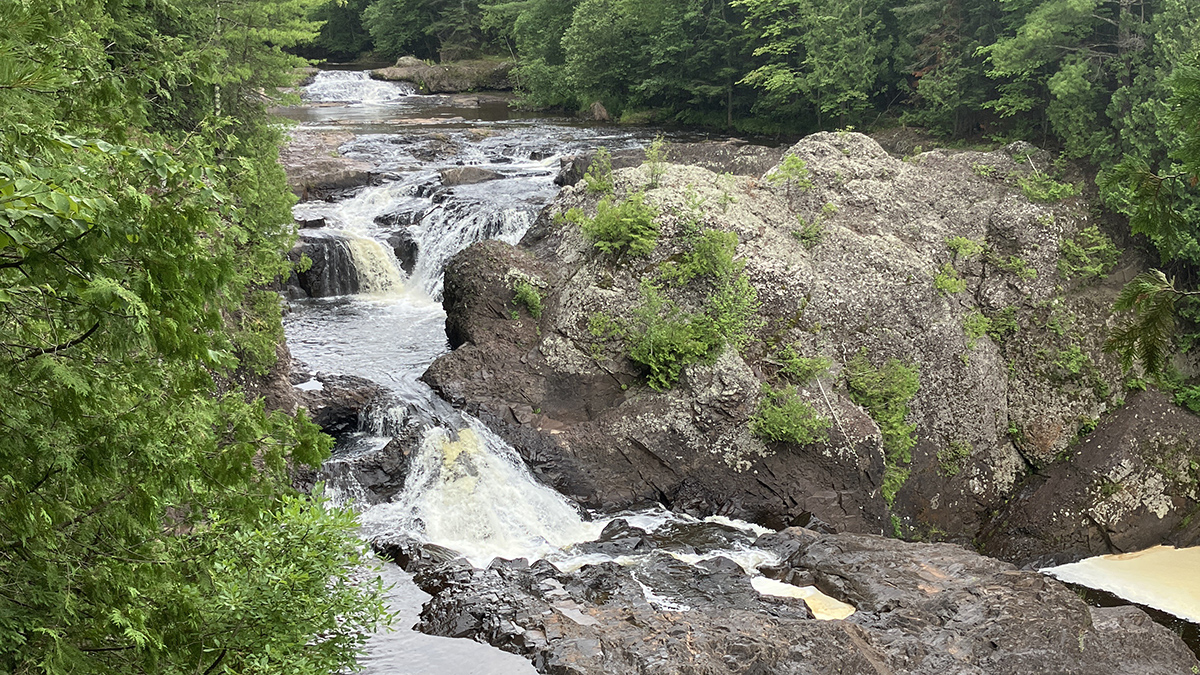Source: Journal of Geophysical Research: Solid Earth
Around 1.1 billion years ago, the oldest and most tectonically stable part of North America—called Laurentia—was rapidly heading south toward the equator. Laurentia eventually slammed into Earth’s other landmasses during the Grenville orogeny to form the supercontinent Rodinia.
Laurentia’s path during that period is known, thanks to paleomagnetism. By tracing the orientation and magnetism of rocks in the lithosphere, scientists can approximate the relative position and movement of Laurentia leading up to Rodinia’s formation.
The rocks along Lake Superior in northern Wisconsin and Michigan are especially important for tracing Laurentia’s movement. These rocks—dominated by red sandstones, siltstones, and minor conglomerates—were deposited during extensive sedimentation caused by the North American Midcontinent Rift and are rife with iron oxides like hematite. Hematite can acquire magnetization when it is deposited, which records where the rock was in relation to Earth’s poles at the time.
Unfortunately, the existing paleomagnetic record is marred by a gap between 1,075 million and 900 million years ago, limiting our understanding of how, when, and where Rodinia formed.
To fill this data gap, Fuentes et al. collected new samples from the Freda Formation near Lake Superior, which formed in floodplain environments an estimated 1,045 million years ago. The authors combined these data with stratigraphic age modeling to estimate a new, sedimentary paleopole, or the position of the geomagnetic pole at a particular time in the past.
Previous studies indicate that for 30 million years, sometime between 1,110 million and 1,080 million years ago, Laurentia moved from about 60°N to 5°N at a rate of 30 centimeters (12 inches) per year—faster than the Indian plate’s collision with Eurasia pushing up the Himalayas. This study showed that over the following 30 million years, Laurentia’s progress slowed to 2.4 centimeters (1 inch) per year as it crossed the equator.
The paleocontinent’s slowdown during Freda Formation deposition coincides with the onset of the Grenville orogeny. The results confirm that a stagnant single-lid regime—in which the lithosphere behaves as a single, continuous plate rather than multiple independent plates—was not in effect during this interval. (Journal of Geophysical Research: Solid Earth, https://doi.org/10.1029/2025JB031794, 2025)
—Aaron Sidder, Science Writer


